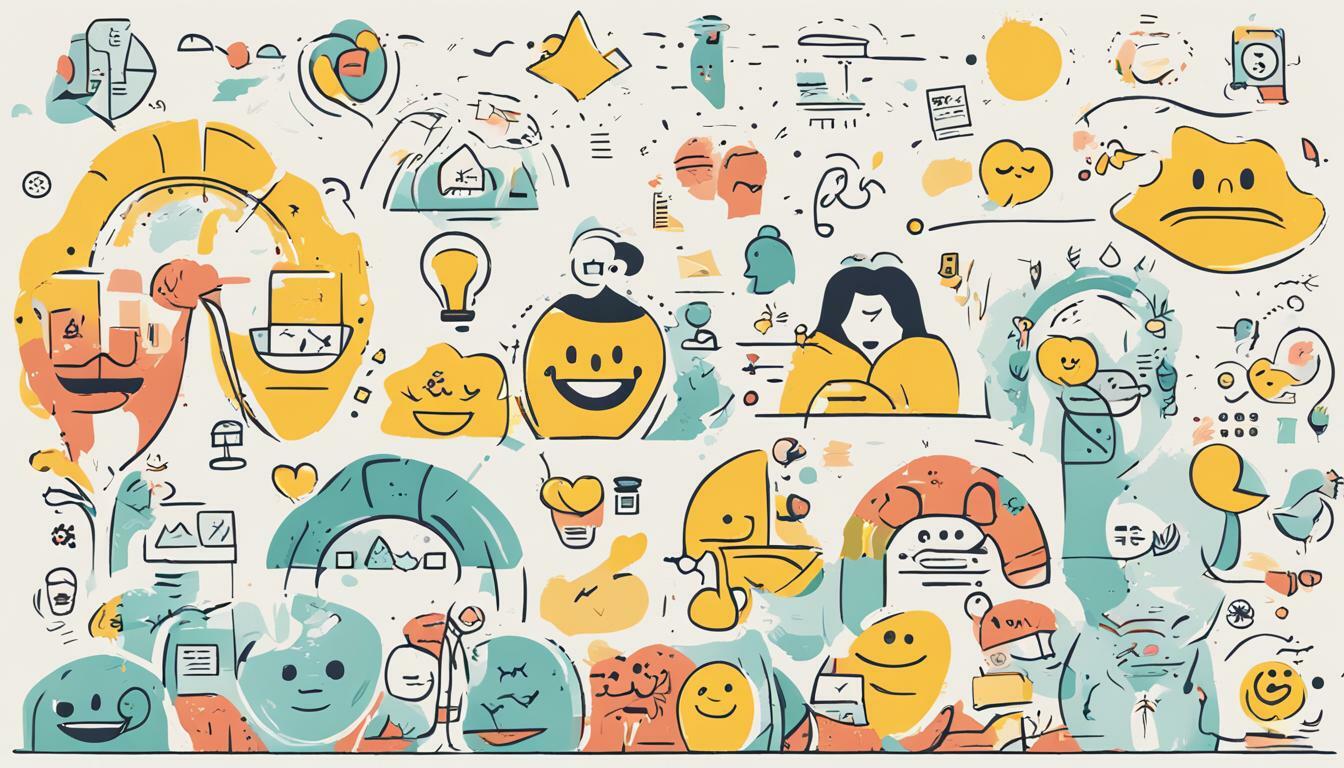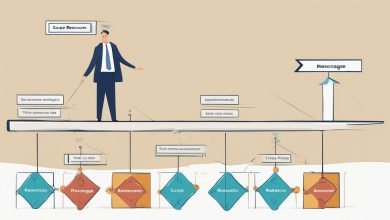
When it comes to designing products, it’s easy to focus on features and functionality. However, in today’s world where customers have numerous options, it takes more than just features to make a product stand out. This is where emotional design comes into play.
Emotional design refers to the process of designing products with the goal of evoking certain emotional responses from the users. This goes beyond just making a product look good, to creating a deeper connection with the users and fostering positive emotions. So, how does emotional design impact product success, design impact, and product development?
Key Takeaways
- Emotional design goes beyond product features and functionality to create a deeper connection with users.
- Emotional design has a significant impact on product success, customer satisfaction, and user experience.
- Incorporating emotional design into product development requires strategies such as user research, prototyping, and iterative design.
Understanding Emotional Design
Emotional design is a human-centered design approach that prioritizes the emotional experience of users. It focuses on creating products or services that evoke positive emotions and feelings, increasing user engagement, satisfaction, and loyalty. Emotional design seeks to create a product that not only meets the functional needs of the user but also provides an emotional connection, ultimately leading to a successful design impact.
Unlike other design approaches that only consider functional aspects, emotional design views the user as a whole person and considers their psychological and emotional needs. By understanding and addressing the emotional needs of users, emotional design can create products that are not only practical but also emotionally compelling.
The ultimate goal of emotional design is to create memorable experiences and establish a long-lasting relationship between the user and the product. This can be achieved through various strategies such as storytelling, aesthetics, and interactive elements that engage the user emotionally.
The Power of Emotional Appeal
Emotional appeal is a critical factor in determining customer satisfaction and overall user experience. Emotions play a significant role in decision-making, and products that appeal to users’ emotions are more likely to foster positive associations and create a lasting impression.
Emotional design goes beyond functional features to incorporate elements that evoke specific emotions in users. By creating an emotional connection, brands can increase user engagement and loyalty, leading to higher levels of customer satisfaction and ultimately, product success.
Research has shown that emotional design can have a measurable impact on product success. In fact, products that are rated highly on emotional appeal are more likely to receive positive ratings from users and achieve greater commercial success.
By incorporating emotional design into product development, brands can create a stronger connection with their audience, leading to increased user satisfaction, loyalty and overall brand success.
Creating Emotional Connections
Designing products that evoke emotions is crucial to engage users and drive success. Emotional design relies on several strategies to create an emotional connection, which can result in increased user engagement and satisfaction.
The Role of Storytelling
Storytelling is an effective way to create emotional connections between users and a product. By telling a compelling story through a product’s design, users can feel a deeper connection and engagement with the product. Storytelling can manifest in various forms such as visual storytelling, interactive storytelling, and even brand storytelling.
Attention to Aesthetics
The visual appeal of a product can have a profound impact on the emotions it evokes from users. Aesthetics can be leveraged to create an emotional connection by using color, typography, and design elements that align with a product’s intended emotional response. Visual appeal can also be enhanced through the use of high-quality imagery and video, which can convey a product’s story in a captivating way.
Interactive Elements
Interactive elements can be used to emotionally engage users and increase user engagement with a product. Interactive elements such as animations or gamification can create a sense of fun and interactivity, encouraging users to interact with a product on a deeper level. When incorporated effectively, interactive elements can make a product more memorable and increase user satisfaction.
Incorporating Emotional Design into Product Development
Now that we understand the importance of emotional design and its role in product success, let’s explore how it can be incorporated into the product development process.
The first step is to conduct extensive user research to understand the emotional needs and desires of the target audience. This can involve in-depth interviews, surveys, and observational studies. By gaining insights into the emotional drivers of users, designers can create products that resonate with their emotions.
Another key aspect of emotional design is prototyping. By creating mock-ups early in the development process, designers can test emotional responses and refine the design to enhance emotional appeal. This iterative design process can help ensure that emotional design is integrated effectively and leads to a positive design impact.
Interactive elements can also be used to create emotional connections with users. For example, gamification can evoke positive emotions such as excitement, joy, and satisfaction. Storytelling can transport the user to a different emotional state, while aesthetically pleasing design can elicit positive feelings such as pleasure and delight.
Overall, incorporating emotional design into product development requires a focus on the emotional experience of users and a commitment to iterative design. By integrating emotional design effectively, designers can create products that not only meet functional requirements but also resonate with users on an emotional level, leading to greater user engagement and product success.
Incorporating Emotional Design into Product Development
Emotional design is an essential aspect of product development, and incorporating it into the process is critical to achieving product success. Effective integration requires careful consideration and planning, and designers need to take the following steps:
- User research: Investigate the emotional needs and desires of your target users and understand what motivates them. Conduct interviews, surveys, and observe their behavior to uncover insights that can inform your design decisions.
- Prototyping: Build prototypes that incorporate emotional design elements and test them with users to ensure that the design evokes the desired emotional responses. Iterate and refine the design based on user feedback to ensure it resonates with users.
- Iterative design: Continuously evaluate the design and refine it based on user feedback. Embrace a culture of experimentation and innovation to explore new emotional design elements that can enhance the overall user experience.
The incorporation of emotional design elements into product development can lead to a more positive user experience and drive product success. Effective emotional design can differentiate your product in a crowded marketplace, creating a lasting emotional connection with users that can translate into brand loyalty and increased sales.
Measuring the success of emotional design is essential. Designers need to evaluate how their design choices have impacted the user’s overall experience and product engagement. User feedback, satisfaction surveys, and data analysis are some of the metrics that can help measure emotional design’s success and ensure that it is incorporated effectively into the product development process.
Case Studies: Successful Implementation of Emotional Design
Several products have achieved significant success by incorporating emotional design into their development. Let’s take a closer look at some of these case studies:
Apple
“Design is not just what it looks like and feels like. Design is how it works.”
-Steve Jobs, Co-founder of Apple
Apple products are renowned for their sleek and elegant designs, and this is no accident. Apple’s designers place a significant emphasis on emotional design, focusing on how users will feel while using their products. By creating a strong emotional connection between users and their products, Apple has built a loyal fan base that eagerly anticipates each new product launch. This emotional attachment has undoubtedly contributed to Apple’s remarkable success, with the company consistently ranking as one of the world’s most valuable brands.
Nike
Nike’s “Just Do It” slogan has become synonymous with the brand, capturing the emotional appeal of the company’s products. Nike understands that their products are more than just athletic gear – they represent an ideal, a lifestyle, and a sense of identity. By tapping into the emotional needs and desires of their customers, Nike has become one of the most successful sportswear brands in the world. Their products are not just functional; they evoke a sense of empowerment, motivation, and confidence.
Coca-Cola
Coca-Cola is a classic example of a brand that understands the power of emotional design. The company has created a brand image that is synonymous with happiness, joy, and togetherness. Their advertising campaigns and packaging design evoke feelings of nostalgia, celebration, and friendship, appealing to our emotional needs and desires. Coca-Cola’s emotional appeal has been a key factor in the brand’s enduring success, making it one of the most recognized and beloved brands in the world.
These companies demonstrate how emotional design can have a significant impact on product success and brand recognition. By understanding the emotional needs and desires of their customers and incorporating emotional elements into their products, these brands have built loyal fan bases and achieved significant success.
Conclusion
Emotional design plays a critical role in the success of a product beyond its features. It creates a deeper connection with users, fosters positive emotions, and enhances the overall user experience. It is essential to understand the concept of emotional design and incorporate it into the product development process effectively.
Strategies for creating emotional connections through design include using storytelling, aesthetics, and interactive elements to elicit emotional responses and increase user engagement. It is crucial to measure the success of emotional design through various metrics, including customer feedback, user satisfaction surveys, and data analysis.
Successful implementation of emotional design can be seen in many real-life products that have achieved significant product success due to their emotional appeal. It is essential to remember that considering emotional design when developing a product is critical in creating memorable and successful products.
Key Takeaways
- Emotional design goes beyond product features to impact the success of a product
- Understanding emotional design is crucial to incorporate it into the product development process
- Creating emotional connections through design strategies can increase user engagement
- Measuring the success of emotional design is essential to evaluate its impact
- Successful implementation of emotional design can be seen in many real-life products
By incorporating emotional design into product development, companies can create products that connect with users on a deeper level, foster positive emotions, and ultimately lead to significant product success.
Emotional design impacts product success. Don’t overlook its importance when creating your next product.
FAQ
Q: What is emotional design?
A: Emotional design refers to the deliberate inclusion of elements that evoke emotions in the design of products. It focuses on creating a positive emotional experience for users and enhancing their overall satisfaction.
Q: How does emotional design impact product success?
A: Emotional design is crucial in impacting product success as it helps create a deeper connection with users, enhances user experience, and drives customer satisfaction. It can differentiate a product from its competitors and foster brand loyalty.
Q: How can emotional design be incorporated into product development?
A: Emotional design can be incorporated into product development through various methods such as conducting user research to understand user emotions and preferences, incorporating storytelling and aesthetics into the design, and using interactive elements to elicit emotional responses.
Q: How can the success of emotional design be measured?
A: The success of emotional design can be measured through metrics such as customer feedback, user satisfaction surveys, and data analysis. These methods can provide insights into the impact of emotional design on product success.
Q: Are there any real-life examples of successful implementation of emotional design?
A: Yes, there are several real-life examples of products that have successfully implemented emotional design. These products have effectively utilized design strategies and emotional elements to achieve significant product success.
Q: Why is emotional design important in product development?
A: Emotional design is important in product development as it helps create memorable and successful products. It enhances user satisfaction, fosters brand loyalty, and differentiates a product from its competitors.








